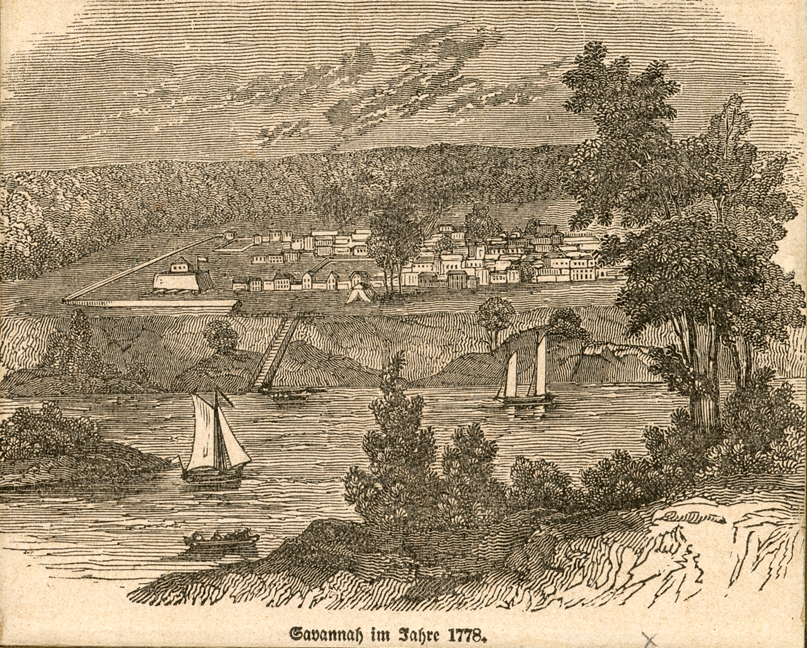
In mid May 1775, just weeks after the bloody Battle of April Nineteenth had sparked the start of the American Revolution, the perhaps first naval skirmish of the Revolution was waged.
I am not referring to the Battle of Chelsea Creek near Boston on May 27-28, 1775. True, British warships were involved at Chelsea Creek, but the Americans had none there. Nor am I referring to the various exploits of Col. Benedict Arnold on Lake Champlain, commander of a flotilla that is often referred to as the first US Navy, which began when Arnold took command of a private schooner he rechristened Liberty on May 15. Arnold’s exploits on Lake Champlain in 1775 were primarily limited to amphibious operations. His naval battles on the same lake were not until late 1776.
Instead, the first naval skirmishes where undertaken by independent American revolutionary parties under no direct command, serving on small fishing and often whaling vessels. There are many undetailed reports of whaleboats harassing British naval vessels throughout the summer and fall of 1775. But perhaps the first, or maybe just the best recorded, is the attack against a detachment from the small 14-gun HM sloop Falcon under Commander John Linzee of the Royal Navy.
On May 11, the 95-foot-long HM sloop Falcon, cruising Buzzard’s Bay on the south side of the Province of Massachusetts, seized the transport Champion as she was sailing from Maryland and probably destined for Marblehead, laden with stores bound for the rebel army. The same day, Falcon took a second prize, a sloop “from Nantuckett [sic] for Having no Clearance.”[1] From this sloop, Cmdr. Linzee learned of a third vessel then at Dartmouth, Massachusetts, owned by a Jesse Barlow, the vessel reportedly carrying within her bowels an illegally smuggled shipment from the West Indies.[2] The following morning, Linzee gave command of this prize sloop over to a midshipman, and from the Falcon’s complement of about 100, gave the midshipman eight seamen, three marines, a gunner, and a surgeon’s mate. Linzee then ordered the midshipman to set sail to Dartmouth to seize the smuggler’s vessel.[3]
The unnamed British prize sloop reached Dartmouth probably hours later, only to discover the smuggler’s vessel had already landed its cargo. Nevertheless, the small British crew seized it and together the two vessels sailed back for the Falcon. But Jesse Barlow and the inhabitants of Dartmouth took notice, and soon they prepared the whaling sloop Success under the command of Captain Daniel Egery, manning it with 30 men and arming it with just two small swivel guns. Hours later, they set sail “in pursuit of these royal pirates.”[4]
The Dartmouth whaling sloop Success found the British midshipman’s sloop and commandeered smuggler’s vessel anchored off Martha’s Vineyard, moored about three miles apart. The Success tacked toward the smuggler’s vessel first and quickly seized it without a shot fired. Once the Dartmouth men commandeered it, the now two American vessels sailed for the British prize sloop. The British midshipman ordered to quickly hoist sail, but the two American vessels glided across the water too quickly. So the British responded by firing small arms and swivels, but the Americans fired back with their equally small arms, reportedly wounding two British seamen and their midshipman commander. The two Yankee vessels then crashed alongside the British prize sloop and the American crews quickly boarded her, overwhelming the Royal Navy seamen. After a very short mêlée, the Yankees forced the British seamen below deck, so taking command. Together, the three ships sailed back to the coastal town of Fairhaven, Massachusetts, and there disembarked the fourteen British prisoners, some of them wounded, sending them away to the inland town of Taunton, Massachusetts.[5]
Thus ended the first naval skirmish of the war.
HM Falcon meanwhile guarded the precious Champion transport, and in the following days took several other vessels as prizes. On about May 31, when Champion at last sailed into Boston Harbor under command of her Falcon crew, she brought with her some 800 barrels of flour and a bit of corn, all intended to feed the rebel army.[6] The HM Falcon followed her into Boston Harbor two days later, on June 2, and it was then that Commander John Linzee reported to Vice Admiral of the Blue Samuel Graves, commander of all Royal Naval forces in North America, of the extraordinary tale of the bold American rebellion they had encountered out at sea.[7]
Little did Adm. Graves know, this was just the first of a great many reports he would soon receive about whaling boats attacking British naval vessels. Two weeks later, Falcon would provide support for the Battle of Bunker Hill.
[1] Falcon’s Journal (May 11), in Naval Documents of the American Revolution, ed. William Bell Clark, William James Morgan, Michael J Crawford, 11v. (Washington, DC: Naval History Division, Dept. of the Navy, 1964) (abbreviated NDAR hereafter) 1:311-12.
[3] There are unsupported online sources that claim the midshipman is Richard Lucas, but I have found no reliable sources for this.
[4] Quote, etc: Massachusetts Spy newspaper, May 24, 1775, p. 3. Success may be a name later ascribed to the American boat, appearing in late sources such as Lineage Book, Society of the Daughters of the American Revolution (Washington, DC: 1904) 18:29, and Duane Hamilton Hurd’s History of Bristol County, Massachusetts With Biographical Sketches of Many of Its Pioneers and Prominent Men (Philadelphia, PA: J. W. Lewis & Co, 1883) 269. Capt Egery is mentioned by name in the Nathanial Freeman letter, as cited.
[5] The details are scant: Massachusetts Spy, May 24, 1775, p. 3; Graves to Philip Stephens, May 15 and May 19 and June 16, all three in Graves’s Conduct (cited below); Falcon’s Journal (May 11, 12, “17” really 18), in NDAR 1:311-12, 322, 350-51, originals in ADM 51/336, UK National Archives; Rev. Ezra Stiles’s Literary Diary of Ezra Stiles, D.D., LL.D., ed. Franklin Bowditch Dexter, 3v. (New York: Charles Scribner’s Sons, 1901) 1:560 (May 23 entry).
[6] Graves to Philip Stephens, May 15 and June 16, both in Samuel Graves’s The Conduct of Vice Admiral Samuel Graves, Considered During the Period that He Held the Command of His Majesty’s Naval Force, in
North America, 1774-1776, ed. George Gefferina (unpublished, begun circa Dec 11, 1776, completed Dec 1, 1777) original in British Library Ad. 14.038 and 14.039, a transcription in Massachusetts Historical Society, selections in NDAR.








9 Comments
Derek,
Thank you for writing this great article, I always love learning new things about this time period in American History.
Ive followed your page on Facebook for quite a while and hope to see 1775 the book available soon! Glad to see you posting articles here, keep it up.
Hi Michael,
Thanks for your continued support! I’m planning on several more articles at this blog. In fact, I’m going to discontinue posts on my personal blog, as there are far more readers here, which is better for the 1775 project, in the ongoing effort of getting it published.
This article is just a small piece of interesting lesser-told stories that will appear in 1775.
Thanks again for your support,
Derek
Gave you a credit on
What’s New on the Online Library of the American Revolution.
Best wishes on getting it published. I love the subject and would absolutely buy a copy based on having read the excerpt here.
@John: thank you sir!
@Stuart: thank you as well, sir! I need all the luck I can get… it’s tough getting started as a first time author.
Almost three years later, I found a document confirming that the junior officer from the Royal Navy was Richard Lucas. His name appears in annoying form in the Massachusetts Provincial Congress records as “Richard Luckus, mate of the ship Falcon.”
In 1782, Royal Navy sources show, Lucas was promoted to captain. By 1796 he was in charge of the Arrogant with 74 guns. He died the following year.
I fear that my website was the source of the “unsupported online sources that claim the midshipman is Richard Lucas, but I have found no reliable sources for this.” Thank you Mr. Bell for confirming this detail. The same information is in Peter Force’s American Archives, series iv, vol. 2, p. 1894. Lucas was pointed out to me by my friend Bob Brooks, who knows more about the Royal Navy in the American Revolution than any three other people I know.
As president of the local historical society and a resident of Fairhaven, MA I learned this fact after moving to town and it was another addition to our very rich history here. Of course, Fairhaven was a village in the town of Dartmouth at the time. After a few years, I was surprised to hear that Machias Maine claims the first naval battle of the American Revolution. Is there a distinction of what happened in Dartmouth (now Fairhaven) as opposed to what happened in Machias? The Battle of Machias took place June 11-12 in 1775.
I’ve been doing research for a new historical fiction series I am writing set in the American Revolution, beginning with The Privateers, and was surprised to read of this capture of the British vessel in May 1775. I had thought–and read in several places–that the Battle of Machias in early June was the first battle by American privateers (then essentially pirate rebels). It was why Jeremiah O’Brien who captured the schooner Margaretta was given the title “hero of the Concord and Lexington of the Sea”.
Thanks for all the good information!